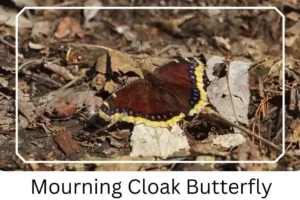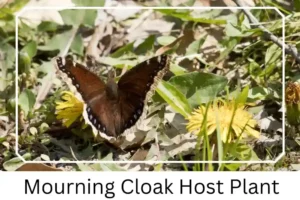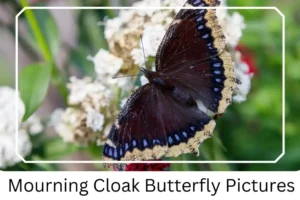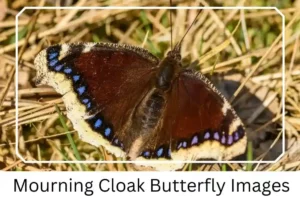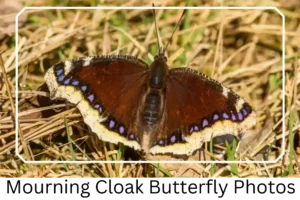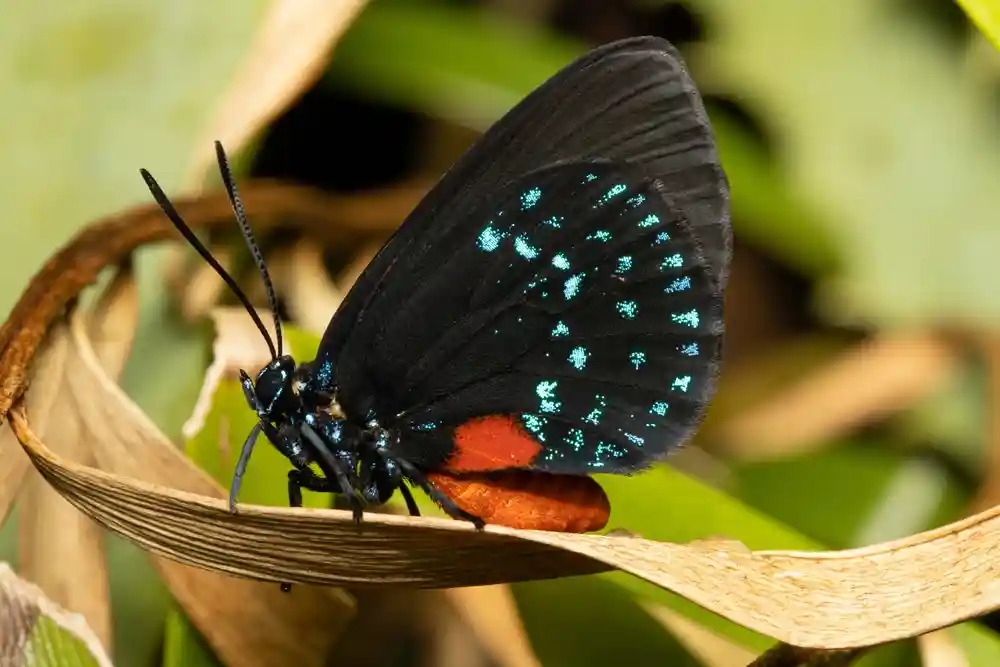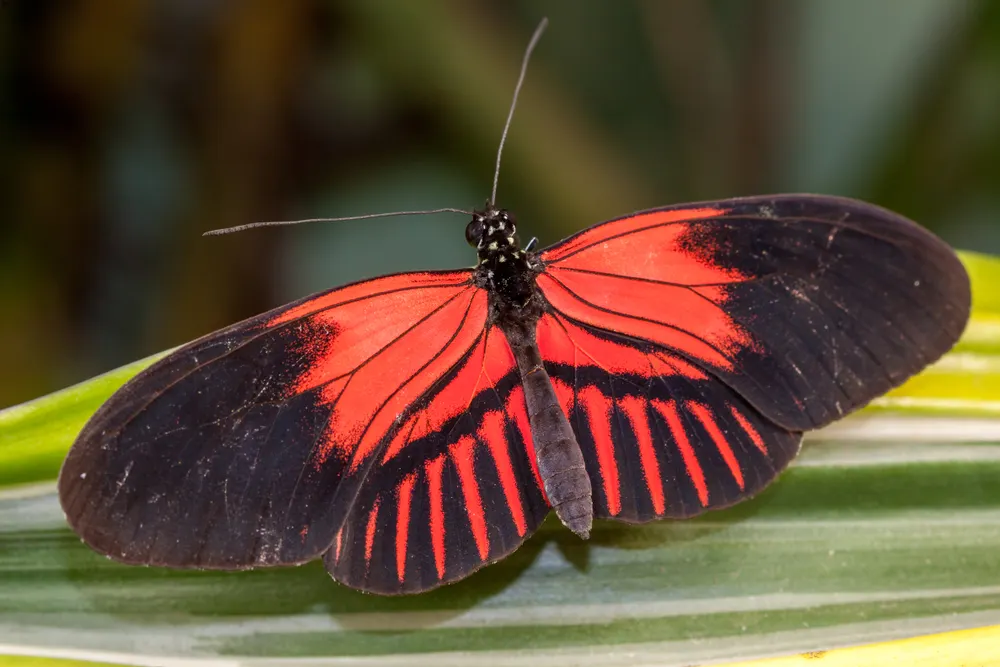Mourning Cloak (Nymphalis antiopa)
The Mourning Cloak butterfly, scientifically known as Nymphalis antiopa, is a striking species that captivates observers with its distinctive appearance and intriguing behaviors. Found across a vast expanse from North America to Eurasia, these large butterflies are renowned for their extensive migrations, allowing them to be seen in regions far from their typical habitats.
Scientific Classification
- Family: Nymphalidae
- Genus: Nymphalis
- Common names: White petticoat butterfly
- Scientific Name: Nymphalis antiopa
Overview
Characterized by their resilience and remarkable ability to navigate across continents, Mourning Cloak butterflies embody the spirit of adventure. Their lifecycle, habitat preferences, and diet reflect a complex interaction with their environment, making them a subject of interest for both scientists and butterfly enthusiasts alike. This detailed page will explore the various stages of their life, distinctive physical features, and behavioral patterns, enriching your knowledge and possibly sparking a deeper interest in lepidopterology—the study of butterflies and moths.
Description and Identification
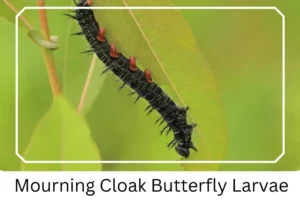
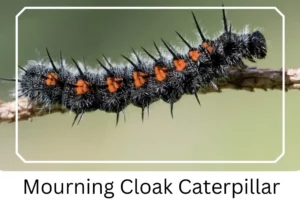 Caterpillar
Caterpillar
The early life of a Mourning Cloak begins as a ‘spiny elm caterpillar’, notable for its spiny black body adorned with a distinctive row of reddish-orange dots along its back. Equipped with bright red prolegs, its body is a fascinating mix of black spines, white spots, and small hairs, capable of growing up to two inches in length.
Pupa
Transitioning to the pupal stage, the Mourning Cloak chrysalis displays a tan or brownish-gray coloration, with unique red, pointed spikes along its sides. This stage also features a beak-like structure, tubercles, and horns that emerge from the head, reaching an average size of 0.8 inches, with some exceeding 1.1 inches.
Adult Butterfly
In their adult form, Mourning Cloaks showcase a rich maroon or brown hue when their wings are spread, bordered by pale yellow edges and accented with black and iridescent blue spots. The underside of their wings presents dull gray striations, maintaining the pale yellow borders. These butterflies do not exhibit sexual dimorphism, making males and females visually similar.
Sexual Dimorphism: Not present
Color and Appearance: Maroon or brown wings with pale yellow edges and iridescent blue spots when open; dull gray with similar borders when closed.
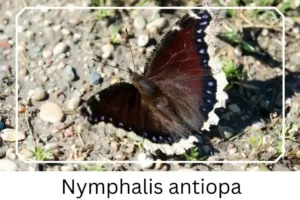
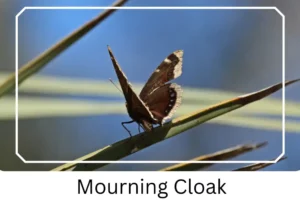 Average Wingspan: Ranges from 2¼ to 4 inches (5.7 – 10.1 cm)
Average Wingspan: Ranges from 2¼ to 4 inches (5.7 – 10.1 cm)
Flight Pattern: Known for their fast and strong flapping.
Eggs
The eggs of the Mourning Cloak are initially amber yellow to pale olive green, laid on the upper surface of host plants. Over time, they transition to pink and eventually almost black as they mature.
Quick Facts | |
| Distribution | Spanning entire North America, from south of the tundra to central Mexico, and temperate Eurasia; also found in the Gulf States and peninsular Florida. |
| Habitat | Adaptable to a wide range of environments, including open spaces, parks, suburbs, and woods, especially in riparian areas. |
| Lifespan of Adults | 10-11 months. |
| Host Plants | Prefers willow (Salix) trees, American elm, hackberry, aspen, and paper birch. |
| Adult Diet | Primarily consumes tree sap (especially oak) and rotting fruits; seldom feeds on flower nectar. |
How to Identify Mourning Cloak?
Identifying a Mourning Cloak butterfly can be a rewarding experience, made easier by noting its distinctive features. Look for large, dark maroon or brown wings with pale yellow edges, a unique pattern that is visible when the wings are open. The presence of bright, iridescent blue spots near the black demarcation between the maroon and yellow parts is a telltale sign. Another key identifier is the underside of the wings, which show dull gray striations but retain the pale yellow edges. Additionally, observing their flight pattern—fast with strong flapping—can aid in identification. Remember, both males and females look alike as there is no sexual dimorphism in this species, making the color and pattern of the wings the primary focus for identification.
Did You Know?
- The term ‘mourning cloak’ is unique to North America, with the species known as ‘Camberwell beauty’ in Great Britain.
- Mature caterpillars are known to roam, often found on trees and plants that are not their typical hosts.
- Since 2001, the Mourning Cloak has been the state insect of Montana.
- It is considered to be the longest-living butterfly species within its range, showcasing a remarkable lifespan in the wild.
Conclusion
The Mourning Cloak butterfly is not just a testament to nature’s beauty but also to its complexity and adaptability. From the spiny elm caterpillar to the majestic adult butterfly, each stage of its life is a marvel, reflecting the intricate balance of ecosystems across continents. Whether you’re a seasoned entomologist or a casual observer, the Mourning Cloak offers a fascinating glimpse into the world of butterflies, encouraging us to appreciate the smaller, yet equally significant, wonders of our natural world.
Mourning Cloak Pictures

Scientific Classification

- Family: Nymphalidae
- Genus: Nymphalis
- Common names: White petticoat butterfly
- Scientific Name: Nymphalis antiopa

